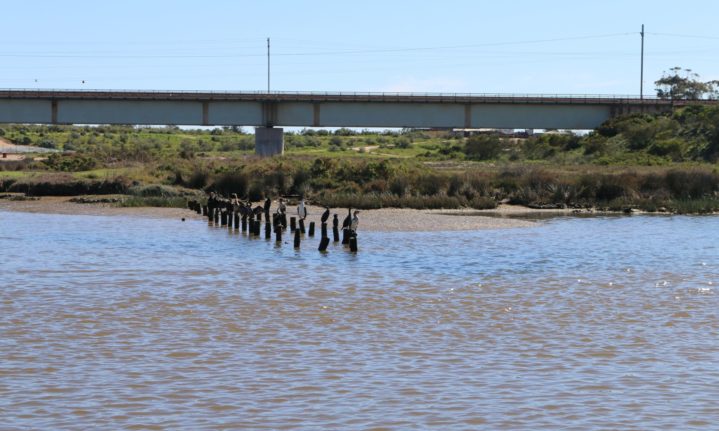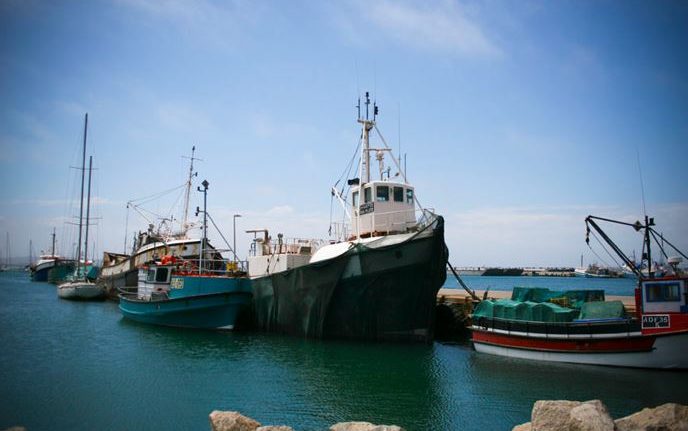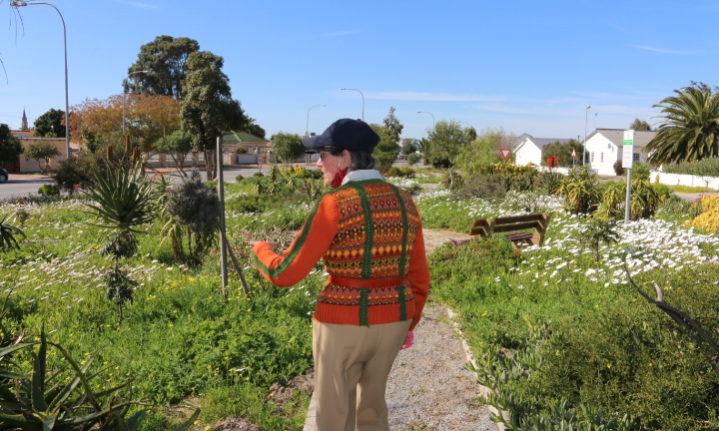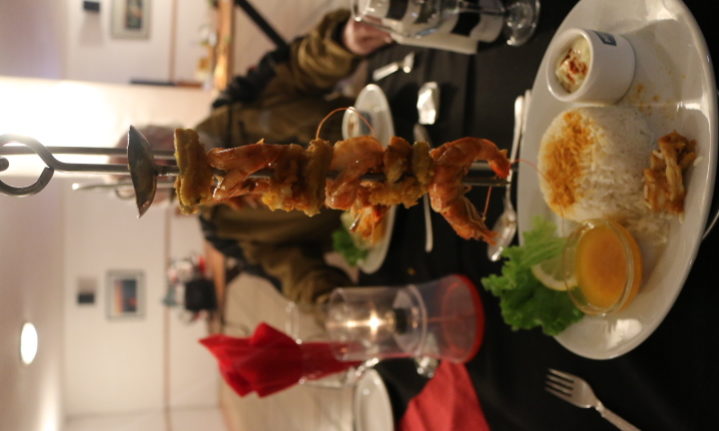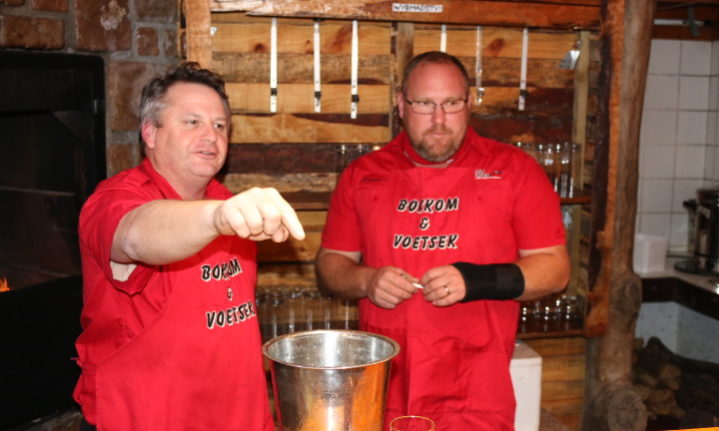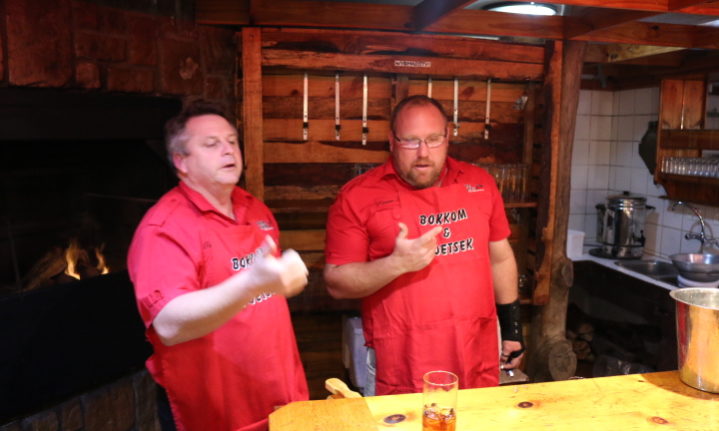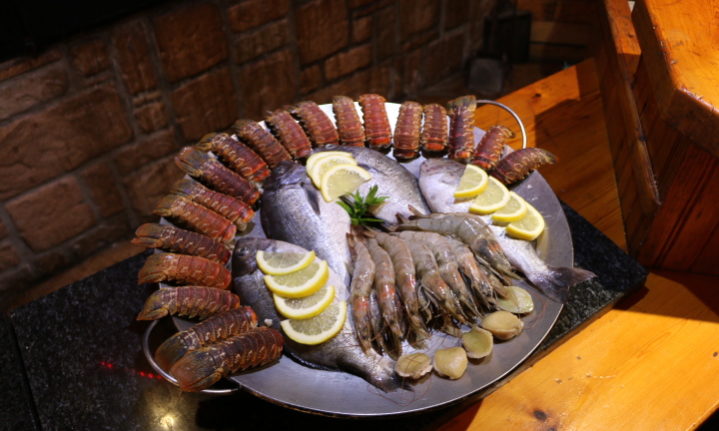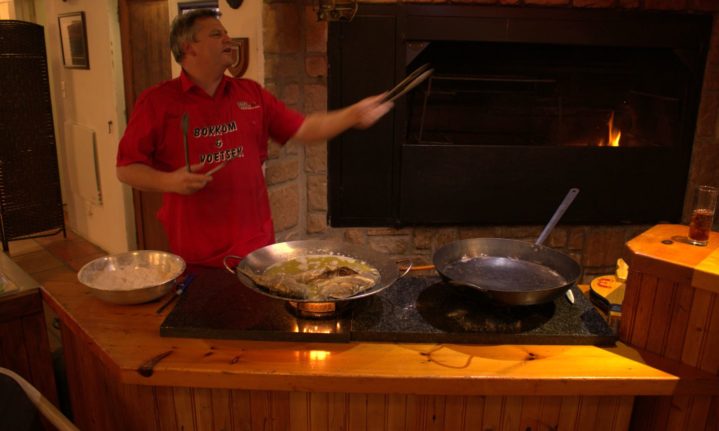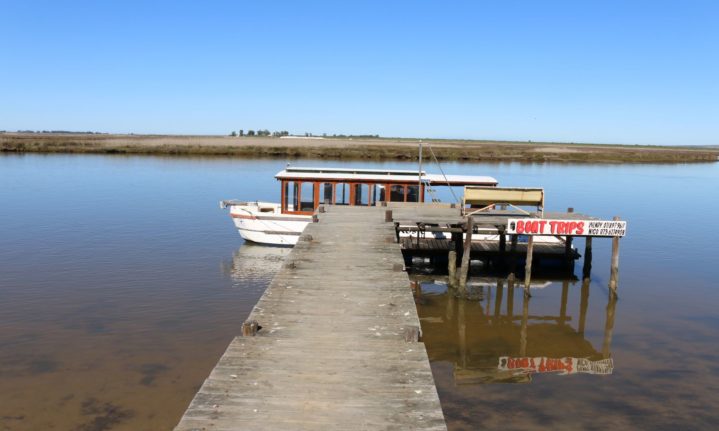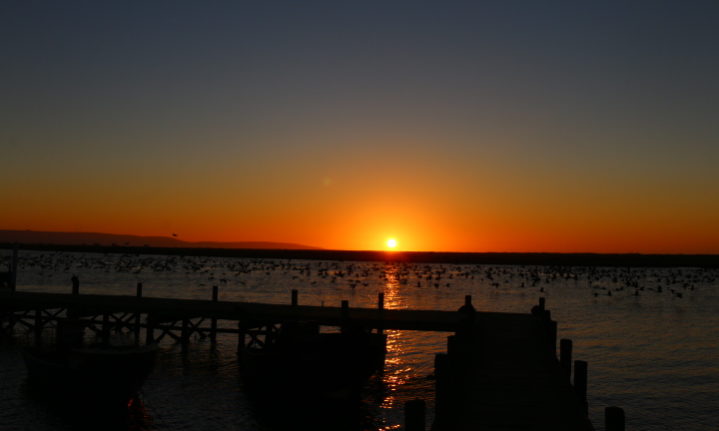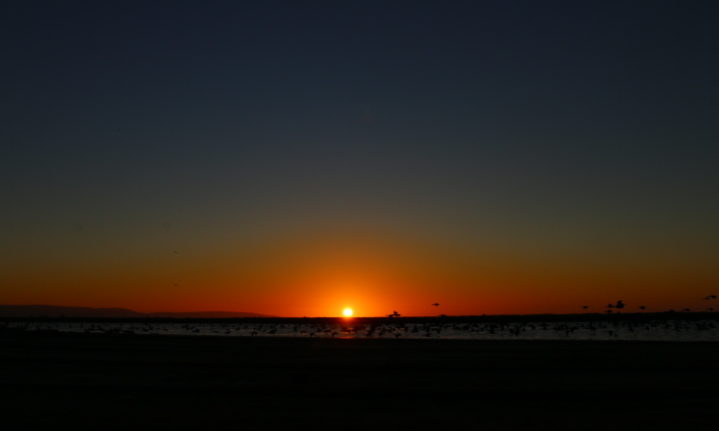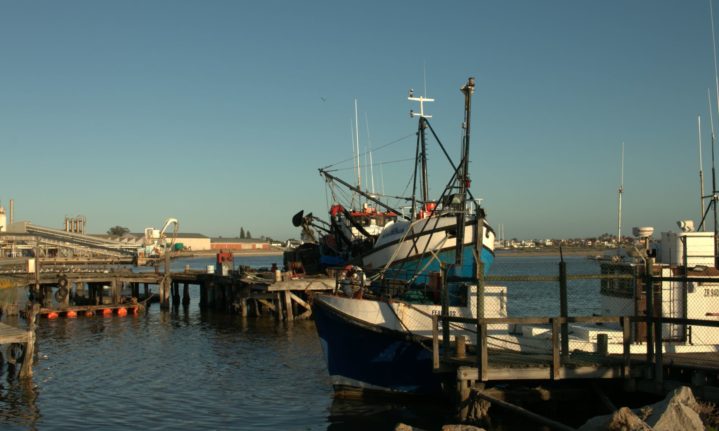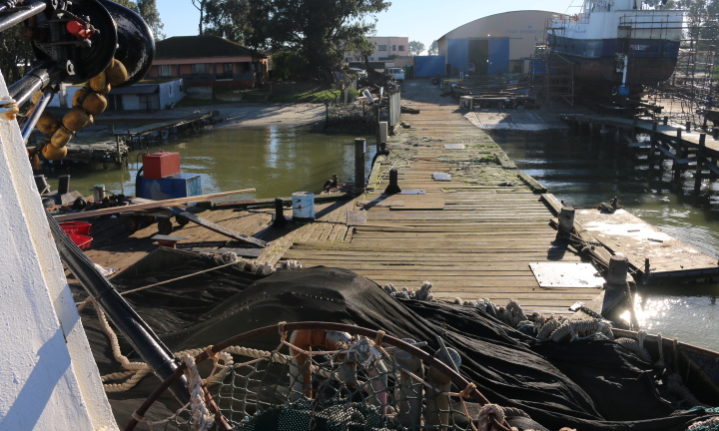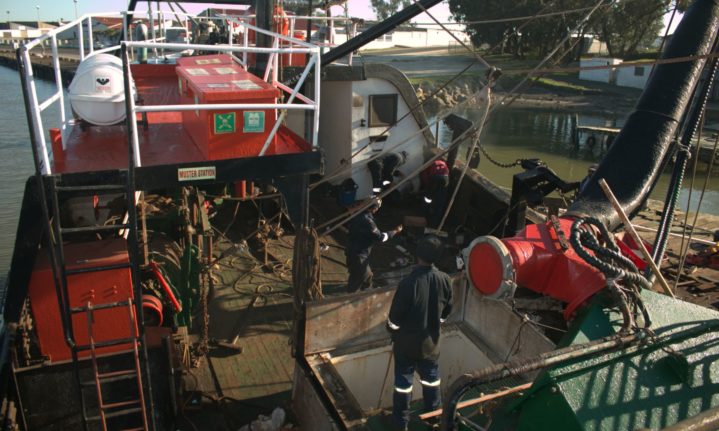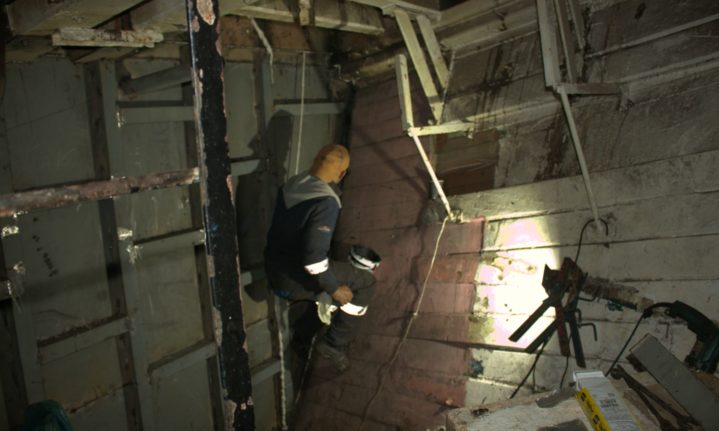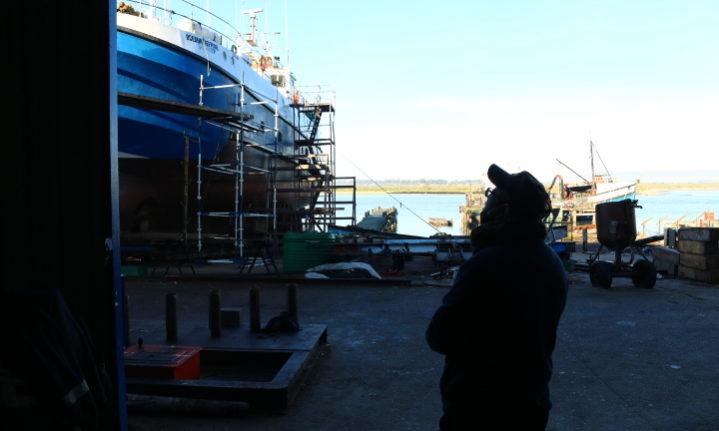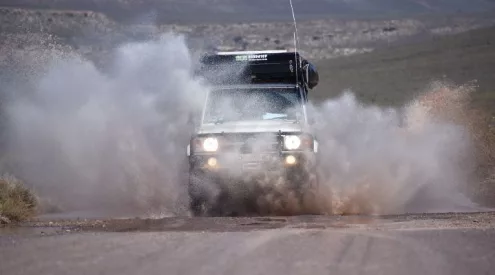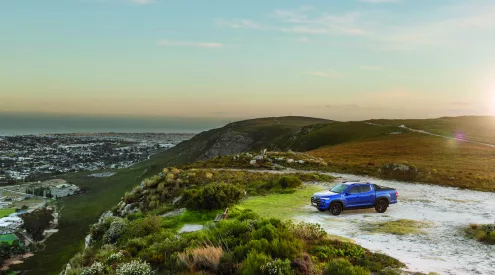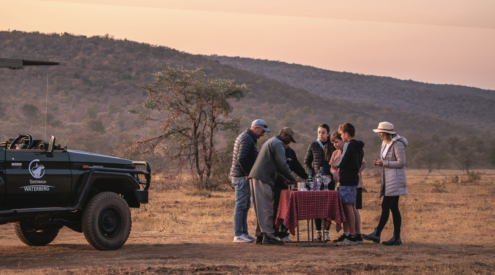It’s difficult to write justifiably about the West Coast without including profanity. Some words that usually only seem to slip out when one is exceptionally angry or emotional are embraced as part of the day-to-day vernacular of Velddrif and the neighboring Laaiplek. It is exactly that transparency that charms you.
If you find yourself in Velddrif, you might find yourself in one of the small town’s 26 bars and encounter a telling narrative from a local. The storytelling might be crude, but the town wears its heart on its sleeve, just the sleeves rolled up so it’s harder to see.
Immersing yourself in this West Coast dorpie, you don’t get the manicured and idealised images, but an authentic portrayal of life on the West Coast where the idyllic veneer has peeled away like paint on its old wooden fishing boats.

Its people embrace the stink of the fish factory and the thousands of cormorants opposite the bay. The disarray of shipyards and industry give life to the people in the town who in return, give it right back to the town, and it emanates throughout the West Coast.

If the West Coast were a country, Velddrif would be the capital and snoek the national animal. Located at the mouth of the Berg River, an estuary gives life to an abundance of birdlife and a heritage fishing industry that is as old as the Cape itself, and an authentic portrayal of a unique region.
On the banks of the Berg River’s ‘bek’
The notoriety of the town is dependent on who you ask. Ask a birder, and they will tell you about the estuary and its wide array of birds but ask a fisherman and you will hear all about the smell of the fish factory when the wind blows a certain direction.

Just outside the Riviera Hotel is one of the best places to watch the sunrise
It is the confluence of nature – a Ramsar site – and development that makes up the conjuncture of where the town finds itself today. The delta-like environment and the isolation of the interior farms made it an ideal location for a settlement, where boats transporting grain from the interior would eventually give half of this town its name – Laaiplek, literally translated into a loading place.
This literal loading place is the origin of a popular Kaapse-Klopse classic embedded in popular culture: Die Alibama. The CSS Alabama was a transport ship, renowned for transporting thatch reed, but more specifically ‘rietgooi,’ historically the reed of choice for bridal mattresses in the Cape Malay community.
Meeting Juffrou
I was fortunate that my induction to the town was provided by a very special local, Felicity Strohfeldt, who goes by the name ‘Juffrou’ to many in the town.
Even though she’s now a retired teacher, she runs the South African National Fisheries Museum in Laaiplek. She knows about all the big fish in South Africa’s fishing industry, and the museum relays all the information on the development of an industry that is the lifeblood for so many South Africans today.
One interesting story was that of the fishing factory, situated just next to the museum. This factory was one of the pioneers in South Africa’s canned foods industry, the origin of Glenryck canned sardines, which become a household name around the world. Today, the factory is now home to another South African icon, Lucky Star pilchards.

It might not be the museum’s most prestigious exhibit, but the history of South Africa’s canning industry is what most fascinated me.
I was fascinated as Felicity took through an exhaustive, but informative run-down of the museum. This context would prove invaluable because as you encounter the townspeople, you realise that their lives are part of a bigger story about a cherished region. So, with Juffrou, I was able to meet the people who make up the eclectic, but heart-warming stories of Laaiplek-Velddrif
Maintaining a national heritage
The CSS Alabama, a once-iconic boat is a story of one legendary ship that sailed South Africa’s shores. The construction of wooden boats is a dying trade and one that no longer exists in South Africa. But the fishing industry is still laden with these iconic monuments in their fleet that need to be serviced. The underappreciated and fading trade of shipwrights is something being kept alive in this West Coast town.
‘All of these boats will last longer than steel or fibreglass boats,’ Keith Goldschmidt of Keyway Shipwright tells me as he looks over his shipyard. He seems much more at ease talking to me in the workshop than when I met him the first time in his office. He continues speaking, telling me how steel and fibreglass boats are not as flexible, taking a beating from rough seas, eventually softening them.

Keith looks out to the Slipway outside his workshop
The old wooden boats buckle and bend with the swell, are more flexible and able to take the pounding of the waves. ‘I can never retire,’ Keith continues, with his company solely responsible for the training of employees in South Africa.

The Keyway Shipwright team working on the maintenance of the boat
Keyway Shipwright is the only place left in the country with the knowledge and skill to service these active monuments. Keith takes immense pride in his business, being sure to note that this company achieves what it does without any help. The company has established a trust to ensure the longevity of its trade.
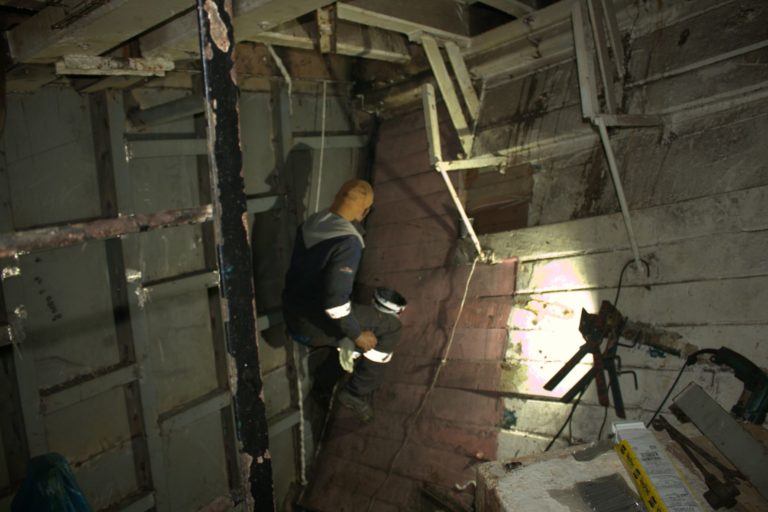
Final touches are done on the inside of the Silver Dolphin
All of Keith’s employees are trained by the company alone. “That young kid there,” Keith says, pointing to an employee who’s probably no older than 20. “He’s got just one eye, he’s helping support his mother at such a young age.”
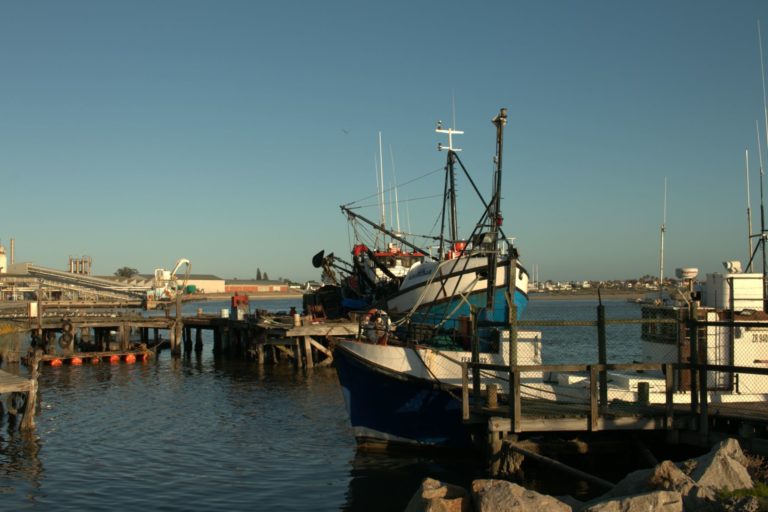
The Silver Dolphin docked at Keyway Shipwright for maintenance and repairs. Keyway Shipwright could be the only place in the country with the know-how to fix wooden boats
It is then staggering to discover that such a cultural treasure’s longevity is in precarity, especially when the industry must look out for itself. These boats have to be serviced every few years, and it is a complex and specific skill that can only be learnt through a living culture of practising it, where knowledge is handed over. It is not taught in a school.

The birds are calling in Velddrif
The estuary at the Berg River Mouth is a birders paradise. The Berg River’s headlands are far off in the Wemmershoek in the mountains above Franschhoek, where the average yearly rainfall is more than 3 000 mm. This is the highest rainfall area in the country, and all this water has to come out somewhere.

Sunset at Rooibaai along the Berg River estuary.
You don’t really have a sense of the vibrant bird life until you see the cormorants returning at sunset. Estimates place the resident cormorant population at 60 000, but locals rate that there are more than 200 000, which seems close to the truth when you watch a constant stream of these birds for hours on end, making for one of the most epic sunsets you will ever see.
The wetland is more than a cormorant roost, and getting on a boat allows you to see a lot more. Fortunately, Wendy and Nico were there to welcome me aboard the ‘Cracklin Rosie,’ their trusted vessel to show visitors nature’s bounty on these waters.

The Jetty to board the Cracklin Rosie.
Chugging down the river, you don’t get a sense of the history of the place, but a scene where nature has been left to flourish. I’m an amateur birder to put it kindly, but fortunately for me, Wendy and Nico are on board to give a helping hand in spotting the unique birdlife the region has to offer.
The estuary supports the highest recorded density of shorebirds on the west coast of Africa, with an average of 60 species recorded at one time! After seeing all the abundant birdlife, it is not surprising to find out that the Berg River is rated as the third most important estuary in South Africa, included in a set of 50 estuaries in the countries identified as requiring protection to achieve national biodiversity targets.

Birds perched in front of the bridge for the Sishen-Saldanha railway.
If you are not too into birding, the boat trip is still a must. As you cruise down the river you can still enjoy the cup of coffee provided and take it all in. As you pass under the railway bridge, maybe the Sishen-Saldanha train, the longest train in the world, will be passing over, an appropriate reminder that the river was so implicated in transporting resources as iron-ore passes by. And just maybe, ‘Daar Kom die Alibama’ starts playing in your head.
You are at ease, quietly floating down the river, and the portrait of Nico behind the boat’s helm enjoying his coffee and a cigarette is calming as you zone out to the sounds of the river.

The jetty is on the legendary Bokkomlaan, where 95% of the world’s ‘bokkoms’ comes from. Unfortunately for me, the fish hadn’t been caught and a recent Covid-outbreak at one of the Bokkom-houses prevented me from exploring this old practice.
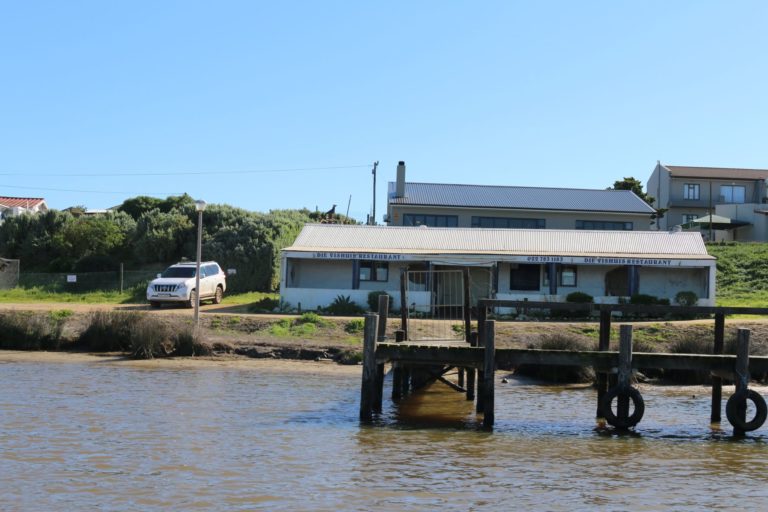
The sight of Bokkomlaan as you make your return on the boat.
Steunvarkie
On the corner of the Bokkomlaan, I was able to pay a visit to a Velddrif local and historian, Lokkie Van Zyl who gave me the tale of the Berg River’s own version of the Lochness Monster. When getting to sit down with the lovely Tannie Lokkie, she told me her house used to be an old shed for the tractors. I admired the pride and joy this town gives her, subtly reminding me to be more enthusiastic about her stories.
She told me how where they are situated now used to be part of a farm, and her chore in the evening was to fetch the cattle from the well near the river. This was a terrifying endeavour as the town was not as developed, so it was pitch black after sunset. There was also the legend of a growling monster in the water that nobody had seen, but only ever heard. This monster was locally known as the ‘Steunvarkie’,
Eventually, it was discovered that this noise is attributed to kob. This notorious fish species is so loud that it disturbed an orchestra performance in the Cape Town Aquarium once. So intense was the fish’s cacophony that musicians refused to play in front of the Aquarium’s predator exhibit, not to return until the Aquarium fixed their ‘mechanical problem’.
Eventually, the ‘mechanical problem’ was traced back to a male kob. As it turns out, the kob uses the drumming sound as a way of attracting females and of deterring other males when it spawns. You can listen to the eerie drumming sound of the kob in the Cape Town Aquarium in the video below.
‘Bokkom & Voetsek!’
What would a visit to the West Coast be without a seafood feast? All the sightings of pied kingfishers plunging into the water built up an appetite, and I was to be wholeheartedly treated by Rick and Gerber when I returned to the hotel. The Riviera has that old charm of small-town hotels that you usually hear about as if it was a time long gone is only personified by a character such as Rick Thiart.

Rick Thiart, mid-cooking, mid-story, and in his element.
The hotel is probably the first thing you see as you cross the bridge over the Berg River when you drive into Velddrif from Cape Town, with it located alongside the west coast road, on the banks of the estuary. It’s reminiscent of those roadside night lodgings filled with stories.
And the Riviera did not disappoint as I made my way into the ‘Fok Sl,’ a play on words for what is called the fo’c’s’le (shortened for forecastle) of a ship. This is the part of the ship at the front of the hull, under the deck, that gets bombarded by the rough seas.
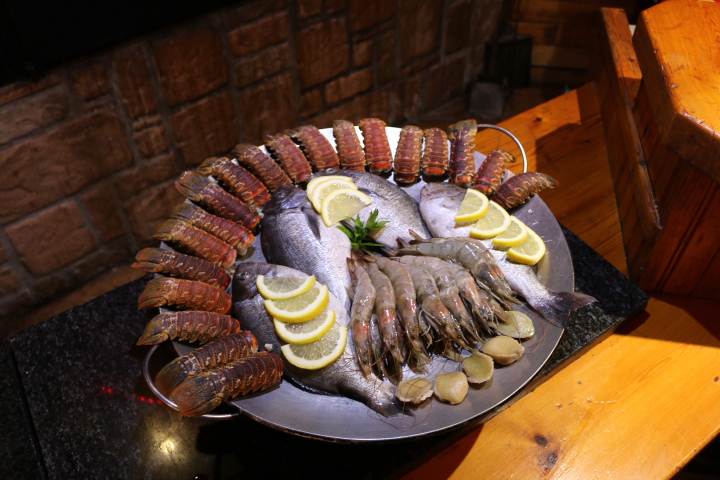
In this hall, you are bombarded by tales around the fire and seafood flung onto your plate. Rick and Gerber are in their element in the front of the fire with their entertaining stories.
This dangerous duo of ‘Bokkom & Voetsek’ is made up of Rick and his friend Gerber Basson, a local fishmonger. It seems like their role in this cooking venture is to cook up a seafood feast while giving each other a tough time and ensuring your glass is always topped up.
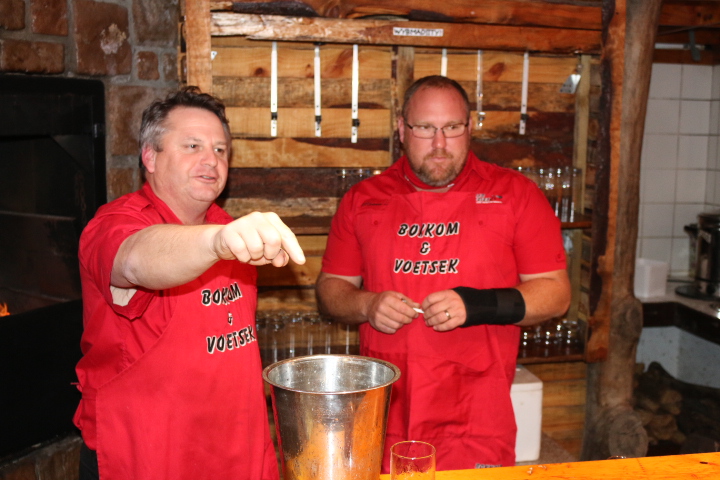
Rick and Gerber doing what they do best.
First, we are treated to a creamy mussel soup with vetkoek as a starter. this prepares you for what lays before; fresh fish, prawns, crayfish and perlemoen (abalone – legally sourced). I was happy that I could see the fish prepared in front of me.
This was another reminder of the authenticity of the region, there is no facade, but the fish is gutted right in front of you. What I also admired was how much of what is usually thrown away is also cooked up. The head remained on the fish and Rick and Gerber cooked up the ‘kuite’ (not calves), the eggs of the fish, which I probably would have discarded had they not encouraged me to try it.
With having most of a fish for myself, we were only to be served the main course. Appropriately named the ‘visstok,’ because it contained no fish; a skewer with prawn and perlemoen drenched in garlic butter.

The ‘vistok’ contains no fish. Rick’s wife told me she would ‘moer’ me if I didn’t feature this. Fortunately, it dish speaks for itself that I didn’t need the intimidation.
The night could have gone on until dawn, but curfew prevented (or saved) us from continuing well into the night. While Rick was cleaning up, he invited me over for a drink at his home on the hotel property. This was when the charm of the West Coast really dawned on me. Here I was, alone for a weekend getaway and ending up in a family’s dining room late into the night in Velddrif.
A flower as a farewell
Before I took the drive back to Cape Town, I met with Elsje Van der Linde, a self-taught botanist who plays a big part in the upkeep of a garden in the centre of town.

She was approached by the municipality to turn a derelict plot of land in the centre of town into a garden. What was once a forgotten street corner is flourishing with the blooming flowers of the Cape Floral Kingdom.
When I arrived at the garden, Elsje was working away in the garden and I was told to look out for her blue bus, which ended up being a vintage VW bay window kombi which she said she uses for transporting plants, and I couldn’t think of more appropriate use for the car.
When she took me through the garden, I shared her fascination with all the succulents and indigenous plants growing knowing each plant species in the garden, and the additional uses, or self-taught if I might add. I spent a good hour walking through the garden which I think was a fitting farewell to the town.
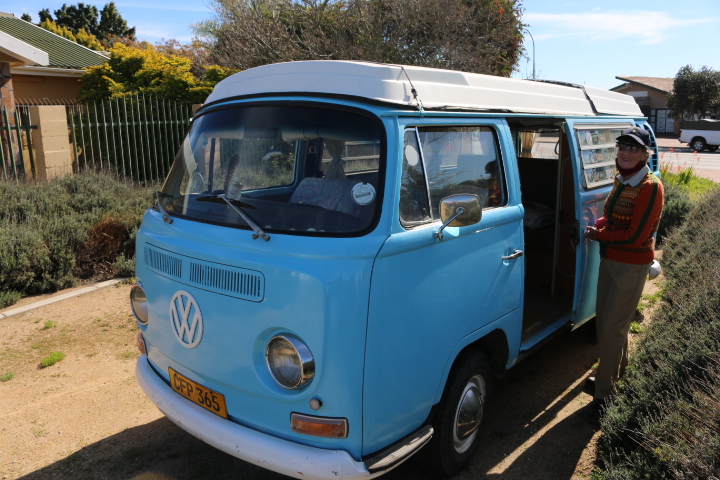
Elsje alongside her plant mobile.
Elsje, as well as Felicity who inducted me into the life of the town, embody the spirit of the West Coast. The people are in touch with the nature and the beauty of the region but have no delusions about the toil that goes into building a thriving community. To really see the true beauty of the West Coast, is to see it through the eyes of its people.
Stay here on your visit to Velddrif
The Riviera Hotel in Velddrif has its own charm and does not skimp on the effort that goes into their rooms. Each room has its own private balcony giving you a view of the estuary, The hotel property is also a great place to enjoy the sunrise, be it on the jetties over the water or when enjoying breakfast on the restaurant’s deck.

Rates: From R980 per room
Contact: [email protected]
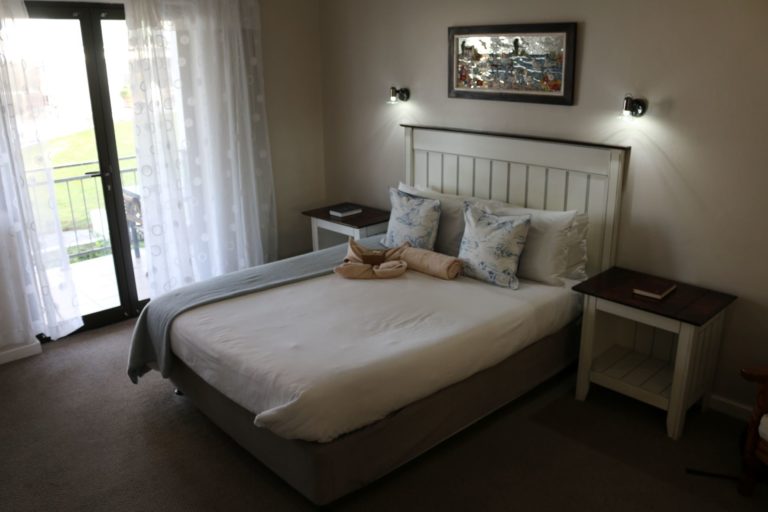
Things to do in Velddrif
Cracklin Rosie River Boat Tours, Velddrif
A boat trip on the estuary is a must for any visitor to Velddrif. The two-hour boat trip flies by when you just keep spotting birds around every bend and the scenery is breathtaking. Booking is essential.
Where: Bokkomlaan
Contact: 071 897 9611
For more information click here
South African Fisheries Museum, Velddrif
With a permanent exhibit of South Africa’s fishing history, the quaint old building has been converted to house important, but obscure artefacts of South Africa’s history. In an age where museums are becoming less popular to visit, the fisheries museum is a comforting space that reminds you why people visit museums.
Where: De Villiers St, Laaiplek,
Pictures: David Henning
Featured image: Christal McFarlan
ALSO READ
Your guide to getting the most out of the Cape’s wildflower season









